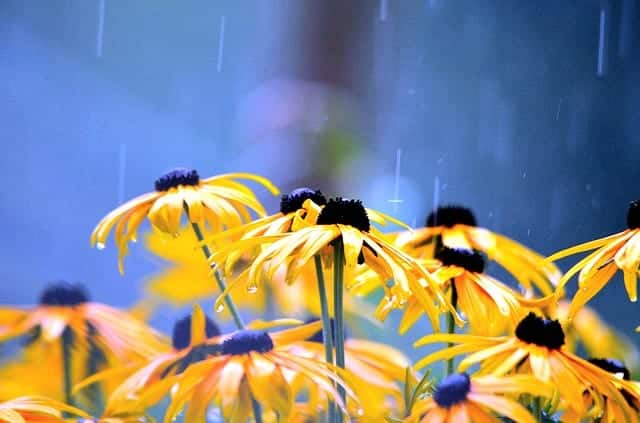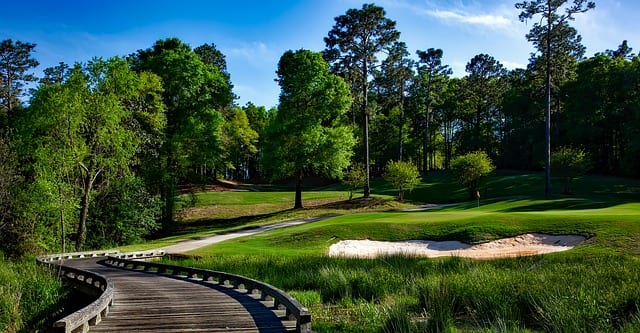
Did you know that the root system of many plants far outweighs what is above ground?
Turfgrass is a prime example, with nearly 90% of the weight being below ground level.
Disregarding what’s happening below the surface of landscapes is a common mistake. Experts will tell you that it is where they go first to solve problems.
Soils are part of a larger ecosystem that provides plants with everything they need to thrive in conditions ranging from sun-drenched, steamy summers to the sub-zero winters we experience here in Minnesota.
This includes getting air and water to plants while also providing the right environment for beneficial micro and macro organisms to flourish, such as earthworms and microbes.
Your soil is alive. Studies show some of those microbes are actively doing their part even when the ground is completely frozen. It turns out that many homeowners overlook the effects of what is happening beneath their landscape.
Let’s change that by taking a look at what you need to know about your landscape’s soil for ensuring the vitality of your lawn and landscaping.
Soil Structure and Composition
You’ll need to know the composition of your soil: type, structure, nutrients, pH, organic matter, and more. Never assume you know the composition of your soil without doing a soil test, because looks can be deceiving when it comes to dirt.
During soil testing, take samples from a variety of places in your yard and have each tested separately. You may be surprised to discover your soil varies quite a bit across your property. Ideally, the soil in the upper six inches should be loose and workable with plenty of organic material.
You live in a house with rooms that store items you use, provide space for future needs, and allow circulation for day-to-day activities.
In many ways, soil structure is like a house for plants and other living creatures. Open space is essential. The space in loose soils serves as “rooms” that hold air and water. Microbes use these spaces to break down organic matter for the plant root systems to thrive.
This is the purpose behind aerating your lawn or cultivating planting beds to loosen compaction and improve soil structure. The next step is to ensure there is plenty of organic matter available.
Proper Drainage

Your soil also impacts the drainage of your outdoor environment. Soils that are predominantly clay, for example, tend to have poor drainage because clay is easily compacted by foot traffic and the weight of rain and snow.
How compact or loose is your soil? Has it been aerated recently? These factors contribute to the level of sub-surface drainage and the amounts of water and oxygen your plants are receiving.
Once again, most people are only concerned with surface drainage, but what’s happening beneath the surface is equally important.
Nutrients and pH
Your landscape plants need proper nutrition, sun, and moisture to survive.
Take some time to consider the health of your soil and whether your landscaping might need additional fertilizing, sunshine, or watering to look its best.
Remember the impact of plants competing for these life-sustaining conditions. Your grass competes for light, nutrients, water, and oxygen with trees, shrubs, flowers, vegetables, and more. Don’t underestimate lowly turfgrass because it’s aggressive root system makes it a tough competitor.
The same is true for larger trees and shrubs. As they grow their water and light needs start to dominate, thereby depriving your more delicate ornamental plants of what they need to thrive.
Finally, as your landscape is conditioned and matures its pH may change. Greater shade tends to increase organic matter in the landscape which lowers the pH. This will require an alteration of your fertilization practices to bring that pH back into balance.
Water Management
One of the trickiest aspects of lawn and landscape care is establishing the right watering schedule. A variety of factors can impact how much you water: rainfall, wind, sun, temperature, and soil makeup, just to name a few.
Here’s a technique that will help you understand how much water your lawn and landscaping needs. First, water the plants in the amount you believe is best.
Next, choose a spot to dig down into the soil and check how it looks below the surface. Feeder roots are typically shallow and sit relatively near the surface of the soil.
When you examine the soil, is it still dry, or are the roots getting plenty of moisture? This information can inform your future applications of water. You may discover that your automated water systems will require occasional hand-watering to have your landscape looking its best.
Foot Traffic and Compaction
Believe it or not, the foot traffic on your lawn has an effect below the surface of the ground. Foot traffic compacts the soil and reduces the amount of oxygen and water that can reach the roots of the grass.
This effect is especially pronounced after periods of heavy rain when the ground is soggy. Try to minimize foot traffic after heavy rains or watering and give the grass and soil some time to recover.
Inevitably, you have to incur some soil compaction to complete outdoor projects. The best solution is to discard that soil and replace it with fresh, loamy soil. This will add to that project’s budget but in the long run you’ll be glad you took this measure.
Sometimes it’s necessary to remove spent soils that are depleted of organic matter or whose structure is broken beyond repair. Our clients that have done this tell us their seasonal flower displays are now among the brightest in the neighborhood.
Surface Rocks and Debris
Removing rocks and debris from your landscaping is like general housekeeping. It shows your neighbors you care about your property and it gives you the opportunity to become aware of what may need your attention.
Larger rocks or buried debris, such as concrete become hot spots that gather and hold excess heat. This burns out your turfgrass and impacts the roots or your surrounding landscaping plants.
You don’t have to remove every single rock at first. Treat this task as an ongoing practice that will be necessary over time as rocks are discovered as they move to the surface. You can make it a regular spring and fall activity.
Changes Over Time

Supporting the health of your soil isn’t just a one-time job. Soil moves and shifts over time, which means you must constantly change your approach to match the current state of your yard.
With age, drying, watering, fertilizing, lawn mowing, and foot traffic, your soil might be a lot different today than it was just a couple years ago.
Golf course superintendents are keenly aware of the ongoing movement of soils. If a water drainage measure works for a period of time but then later fails, they question why. This is true whether the soil is loamy, sandy, or clayey like it is here in Minnesota.
Clayey soils are comprised of soil platelets. Just as there is space between a stack of ceramic dinner plates, so it is with clay soil platelets. However, compaction breaks those platelets, thereby closing those gaps that are necessary for air and water to flow.
As your landscaping matures it increases in value along with your home. To be sure your soils are healthy, you may need to perform additional soil tests to identify what has changed.
Let others guess while you take the measures to protect your landscaping investment.
